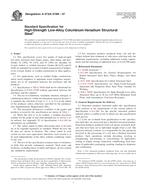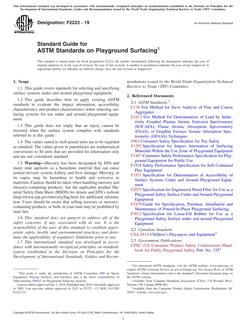1.1 These test methods cover procedures for the chemical analysis of blue pigments known commercially as iron blue, copper phthalocyanine blue, and ultramarine blue.
1.2 The analytical procedures appear in the following order:
| Sections | |
| I ron Blue Pigments | |
| Identification | 6 |
| Moisture by the Brabender Moisture Tester | 7 and 8 |
| Moisture by Toluene Distillation | 9 |
| Water-Soluble Matter by Extraction | 10 |
| Water-Soluble Salts by Electrical Conductivity | 11 |
| Detection of Acid-Insoluble Extenders | 1213 |
| Detection of Acid-Soluble Extenders | 14 to 17 |
| Detection of Organic Colors and Lakes | 18 |
| C opper Phthalocyanine Blue Pigments | |
| Identification | 19 |
| Moisture and Other Volatile Matter | 20 |
| Detection of Basic Dye Derivatives | 21 |
| Detection of Other Organic Coloring Matter | 22 |
| Detection of Ultramarine Blue | 23 |
| Detection of Iron Blue | 24 |
| U ltramarine Blue | |
| Identification | 25 |
| Moisture and Other Volatile Matter | 26 |
| Water-Soluble Matter | 27 |
| Detection of Basic Dye Derivatives | 28 |
| Detection of Other Organic Coloring Matter | 29 |
1.3 The values stated in SI units are to be regarded as standard. No other units of measurement are included in this standard.
1.4 This standard does not purport to address the safety concerns associated with its use. It is the responsibility of the user of this standard to establish appropriate safety and health practices and determine the applicability of regulatory limitations prior to use.
12.1 Acid-insoluble extenders include barium sulfate, silica, and silicates. Alumina may also be found, in part, with this group.
14.1 Acid-soluble extenders include the alkaline earth carbonates or sulfates, magnesium carbonate, and alumina hydrate.
Product Details
- Published:
- 06/01/2009
- Number of Pages:
- 6
- File Size:
- 1 file , 150 KB


